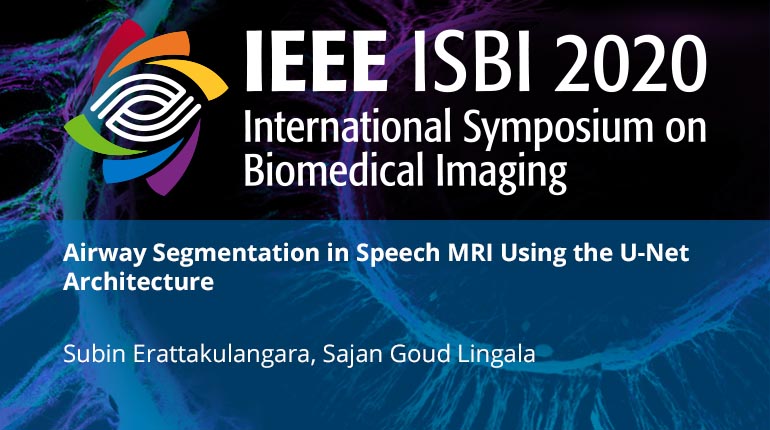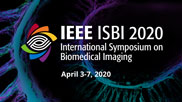Collection:

We develop a fully automated airway segmentation method to segment the vocal tract airway from surrounding soft tissue in speech MRI. We train a U-net architecture to learn the end to end mapping between a mid-sagittal image (at the input), and the manually segmented airway (at the output). We base our training on the open source University of Southern California?s (USC) speech morphology MRI database consisting of speakers producing a variety of sustained vowel and consonant sounds. Once trained, our model performs fast airway segmentations on unseen images at the order of 210 ms/slice on a modern CPU with 12 cores. Using manual segmentation as a reference, we evaluate the performances of the proposed U-net airway segmentation, against existing seed-growing segmentation, and manual segmentation from a different user. We demonstrate improved DICE similarity with U-net compared to seed-growing, and minor differences in DICE similarity of U-net compared to manual segmentation from the second user.
- IEEE MemberUS $11.00
- Society MemberUS $0.00
- IEEE Student MemberUS $11.00
- Non-IEEE MemberUS $15.00
Videos in this product
Airway Segmentation in Speech MRI Using the U-Net Architecture
We develop a fully automated airway segmentation method to segment the vocal tract airway from surrounding soft tissue in speech MRI. We train a U-net architecture to learn the end to end mapping between a mid-sagittal image (at the input), and the manually segmented airway (at the output). We base our training on the open source University of Southern California?s (USC) speech morphology MRI database consisting of speakers producing a variety of sustained vowel and consonant sounds. Once trained, our model performs fast airway segmentations on unseen images at the order of 210 ms/slice on a modern CPU with 12 cores. Using manual segmentation as a reference, we evaluate the performances of the proposed U-net airway segmentation, against existing seed-growing segmentation, and manual segmentation from a different user. We demonstrate improved DICE similarity with U-net compared to seed-growing, and minor differences in DICE similarity of U-net compared to manual segmentation from the second user.
 Cart
Cart Create Account
Create Account Sign In
Sign In
